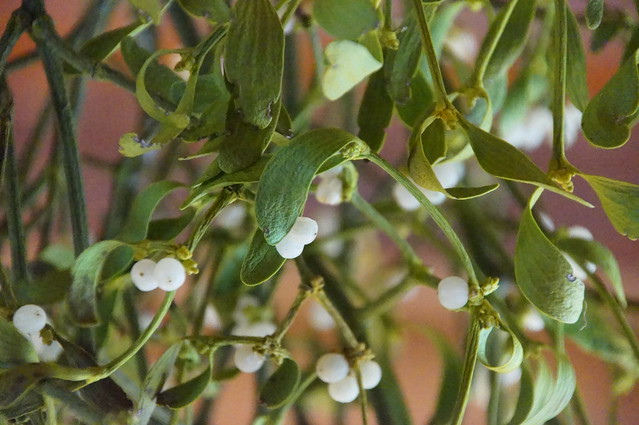The Tradition of Mistletoe at Christmas
Mistletoe is a plant that grows on range of trees including willow, apple and oak trees. The tradition of hanging it in the house supposedly goes back to the times of the ancient Druids; however, there's little evidence that this happened. It is also meant to possess mystical powers which bring good luck to the household and wards off evil spirits. It was also used as a sign of love and friendship in Norse mythology and it features in a story called 'The Death of Baldur'.
When the first Christians came to Western Europe, some tried to ban the use of Mistletoe as a decoration in Churches, because of some of the old stories about it, but many still continued to use it! York Minster Church in the UK used to hold a special Mistletoe Service in the winter, where wrong doers in the city of York could come and be pardoned.
Why do we kiss under mistletoe?
The custom of kissing under Mistletoe seems to comes from England. The earliest recorded date mentioning kissing under the mistletoe is in 1784 in a song from a musical comedy called 'Two to One'. The custom appears to have started around the 1720s, so in the early Georgian period. Mistletoe was also hung on the old English decoration the Christmas Bough or Kissing Bough which were very popular during 1700s - hence the name!
There were illustrations of kissing under the mistletoe in the first book version of 'A Christmas Carol' published in 1843, and this might have helped to popularised the custom. The original custom was that a berry was picked from the sprig of Mistletoe before the person could be kissed and when all the berries had gone, there could be no more kissing!
The name mistletoe comes from two Anglo Saxon words 'Mistel' (which means dung) and 'tan' (which means) twig or stick! So you could translate Mistletoe as 'poo on a stick'!!! Not exactly romantic is it!
